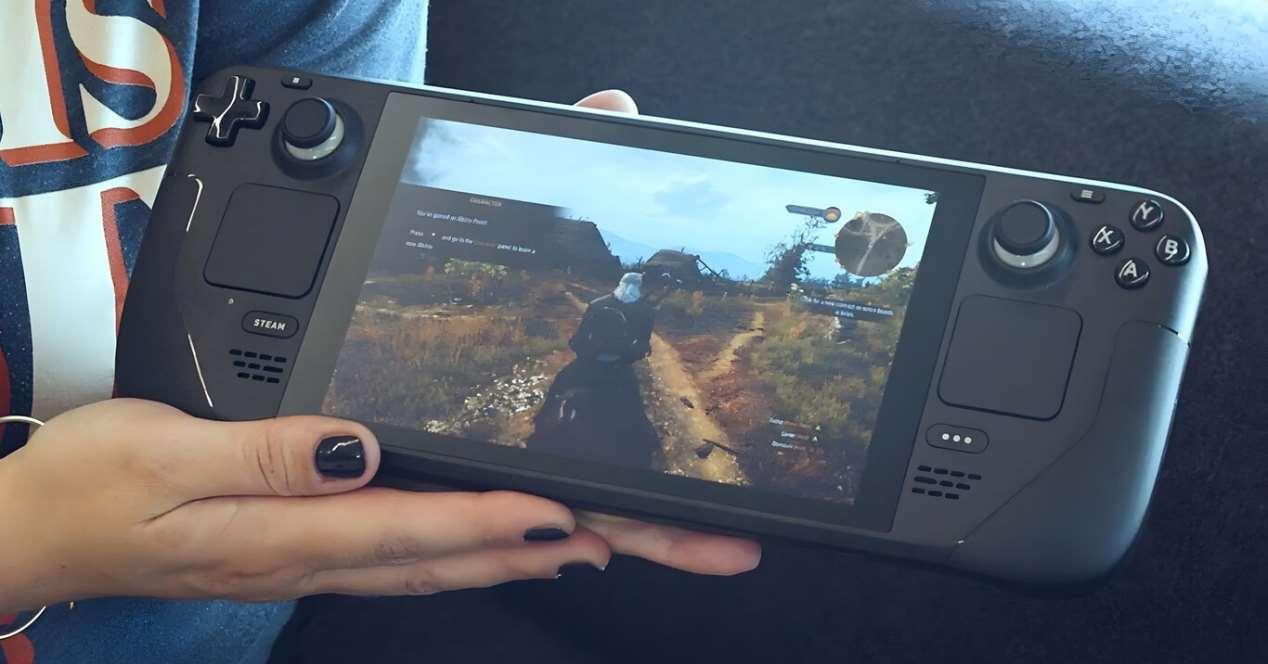In a recent interview, the folks at Valve said that they don’t currently have plans to release a Steam V2, but to make a better battery and lighter version of their laptop. That is, what would be colloquially called a Steam Deck Lite. That’s why we decided to review changes and improvements that a Valve console revision might have.
In a recent interview with The Verge, Valve announced plans to make a lighter, battery-powered iteration of their Steam Deck. That’s why and knowing that the chip will continue to be from AMD, make a list of the changes that the console would have with the improvements that have been seen in the hardware world since Gabe Newell’s company completed the original design .
A Steam Deck Lite is required
And we don’t say it, but Valve itself believes it. You only have to look at the console’s huge size compared to the Nintendo Switch, which isn’t exactly small to back it up. Besides the limited battery life. And it is that the chip designed by AMD for Steam is, literally and considering that we are talking about playing anywhere, a real brown beast and without a doubt the best of its kind. Let’s not forget that it was created specifically for the console, but its design predates some later more energy-efficient projects.
What changes would the Steam Deck Lite chip have?
We see three different possible changes, two of which would come from the Ryzen 6000 series APUs which were a post Van Gogh chip design.
- For one thing, the on-chip internal interconnect has been redone to consume less power. Today, 2/3 of the parts of a processor are precisely that, the internal communication, and it is the part that consumes the most energy. So it makes sense that they would take this part of the Ryzen 6000 for laptops in the future.
- As for the other change from the latest laptop APUs, there is the fact that, despite sharing RDNA 2 GPUs, the Ryzen 6000 version is better optimized for power consumption. So it could achieve the same performance as the original Steam Deck while generating less heat.
As for the third point, it would be at the CPU level, the change from 4 Zen 2 cores with SMT to 8 Zen 3 or Zen 4 cores with this function disabled. The number of threads would be the same, but all of us with a bit of knowledge know why multithreading isn’t used in laptop CPUs, and that 8 cores are more efficient than 8 threads. On the other hand, the use of more advanced, but fully compatible architectures, allows the use of lower clock speeds, which also leads to potential undervoltage and with it lower power consumption and therefore more battery hours.
The console would be narrower
All this would contribute to requiring a less complex cooling and ventilation system and, therefore, with less height, which would make the console lighter and much lighter. With this we would have already reduced one of the dimensions of the console and we would already have a lighter Steam Deck Lite that would not tire our hands so much using it for a long time.
Another of the changes we could see would be a redistribution of buttons. That is, the button panel and the crossbar are not attached to the side of the sticks, but just below. That is, in a stick, the crosshead/button/trackpad hierarchy. It would just reduce the width of the console. In any case, the only dimension that we believe cannot be adjusted is the height of the console.
LPDDR5X type RAM memory
Apart from the chip, although the interface with it is on the processor itself, there is the use of LPDDR5X memory, remember that the Steam Deck uses LPDDR5, because the standard of the improved version n had not been published. Have a faster memory? No, to have memory with less power consumption per transfer using the same bandwidth. This is a similar change to what Nintendo made with its Nintendo Switch models released in 2019, which came with LPDDR4X memory instead of LPDDR4 memory.
Make it easy to include an NVMe SSD
Valve has not designed the Steam Deck so that novice users can change the NVMe SSD in the console, they are not against this being done, but the operation is at least quite complicated to do, since it requires us to change to open the console. For us, the ideal would be to have a small package, which we can open with our fingernails by lifting the lid or, if desired, with a screw. In other words, it is no more difficult to change the storage unit than to do so in the case of the PS5.
A bezel-less screen, please.
And finally, we do not believe that Valve reduces the distances with the buttons. However, we see the possibility of eliminating the side part of the frame in order to slightly reduce its dimensions. It wouldn’t be a very big change. In reality, and being realistic, we don’t see that they can make a design the same size as a standard Nintendo Switch, but it does result in a noticeable reduction in size and that is appreciable and appreciated by all.
Table of Contents










